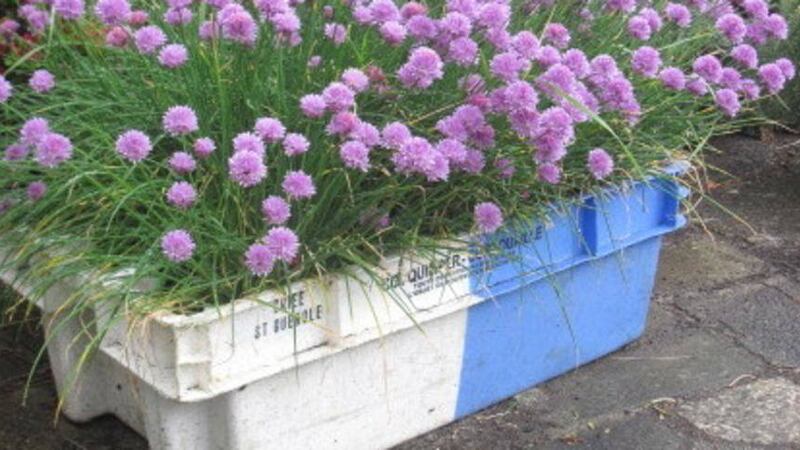I HAD to fetch my parents a new galvanised metal mop bucket last weekend. "The old one’ll make a perfect plant pot," my 81-year-old dad remarked, though more in jest than a flash of creativity.
According to an article in this month’s Which? Gardening, transforming items that are otherwise destined for your council amenity centre into eye-catching garden features is where it’s at these days. My da almost trendy at 81 – who would’ve thought it?
Whatever knack or trait it is that enables my father to spot the potential of something that’s otherwise deemed rubbish, I’ve inherited it – coupled with my mother’s thriftiness and both parents' hoarding tendency. Living on the Co Down coast and regularly walking on the shore, I’m tempted by all sorts of flotsam and jetsam – as well as land waste, often disfigured by the sea and salty winds.
They all beg to be taken home and given a new lease of life – a plastic barrel reincarnated as a water butt; weathered red brick cleaned and reborn as a cold frame; or sun-bleached driftwood reinvented as a garden ornament. Then there’s the fish boxes, washed up from as far away as France – and as close as Ardglass – they are both functional and ornamental.
As far as I know there’s nothing like a fish box for sale in the garden centre yet I find them indispensable when gathering seaweed, storing finished compost or when shifting earth. I also utilise them as a temporary home for plants, for growing cuttings and as a permanent home for chives (see above). And they make an extremely good portable platform for cutting your hedge, though given today’s claim culture it’s important to point out that neither I or the Irish News will be liable for any fish-box accidents.
Arguably the gardener’s most widely-used recyclable is the pallet – as executed in the classic pallet compost heap/bin, no doubt a method nearly as old as the first pallet. I’ll concede it looks the part but personally I’ve stopped using pallets for this purpose, as I find they rot too quickly and are too easily infiltrated by vermin, which in addition to eating any food scraps will also be attracted by the significant heat the composting process generates. That said, better they be used to make a flawed compost heap than burnt.
In Which? Gardening’s member survey 83 per cent of respondents said they had reused items rather than send them to landfill. The most popular were woody prunings used as plant supports (52 per cent), plastic bottles for watering (43 per cent) and paths made out of old bricks (40 per cent). Almost a third have used a bucket as a planter and a quarter utilised old tights as plant ties, with a fifth making a compost bin out of pallets.
In terms of recycling, other examples of members’ ingenuity ranged from making planters from kettles, wellies and a mop bucket to making raised beds from a bookcase, floorboards and a metal car trailer.
Recommended reusables for cane toppers include a wine or champagne cork, yoghurt drink bottle and a tennis ball. Which Gardening? members said strips of plastic milk bottles, chopsticks and ice-lolly sticks could be easily adapted as plant labels, while large planters can be fashioned from fire grates, car tyres and even a toilet.


